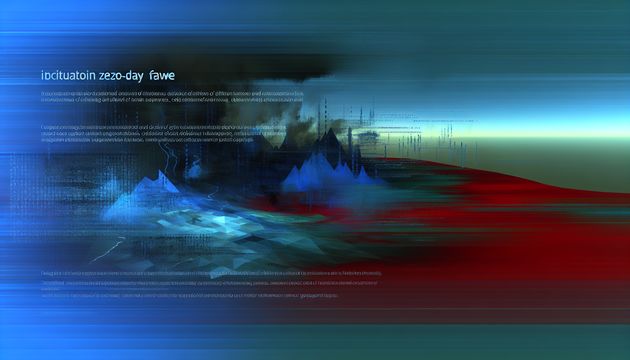
Understanding CVE-2025-7775: A Critical Citrix Vulnerability
The discovery of CVE-2025-7775 has sent ripples through the cybersecurity community, highlighting a critical vulnerability in Citrix’s NetScaler ADC and Gateway products. This flaw, which allows for remote code execution (RCE) and denial of service (DoS) attacks, is particularly alarming due to its zero-day nature and the lack of authentication required for exploitation. With a CVSS v4 score of 9.2, the vulnerability poses a significant threat to internet-facing devices, making immediate action imperative (SOCRadar). The vulnerability arises from improper memory handling, classified under CWE-119, and affects multiple versions of NetScaler products, especially those used as VPN gateways or handling specific types of traffic (SecurityWeek).
Nature of the Vulnerability
Overview of CVE-2025-7775
CVE-2025-7775 is a critical memory overflow vulnerability affecting Citrix’s NetScaler ADC and NetScaler Gateway products. This vulnerability, which has been actively exploited as a zero-day, allows for remote code execution (RCE) and potential denial of service (DoS) attacks. The vulnerability is particularly dangerous because it does not require authentication, making it a high-risk threat to internet-facing devices. The Common Vulnerability Scoring System (CVSS) v4 score for CVE-2025-7775 is 9.2, indicating its critical nature (SOCRadar).
Technical Details
Imagine your computer’s memory as a series of boxes, each meant to hold a specific item. CVE-2025-7775 is like a mischievous gremlin that overfills these boxes, causing chaos. This vulnerability stems from improper memory handling, classified under CWE-119. It allows a remote, unauthenticated attacker to execute arbitrary code or cause a DoS condition without any user interaction. The vulnerability affects multiple versions of NetScaler ADC and NetScaler Gateway, particularly those functioning as VPN gateways, handling IPv6-bound HTTP/SSL/QUIC load-balancing traffic, or operating HDX content routing (SecurityWeek).
Exploitation and Impact
The exploitation of CVE-2025-7775 has been observed in the wild, with attackers leveraging the vulnerability to gain unauthorized access to affected systems. Think of it as a burglar finding an unlocked door in a neighborhood where many houses have the same flaw. The flaw’s exploitation does not require valid credentials, making it particularly dangerous for systems exposed to the internet. Citrix has noted that successful exploitation requires specific configurations, but many production environments already match these criteria, increasing the risk of exploitation (BleepingComputer).
Mitigation and Patching
Citrix has released patches to address CVE-2025-7775, urging users to apply the latest security updates immediately. The company has emphasized the importance of upgrading NetScaler firmware to the versions containing the fix, as there are no mitigations available to protect against potential exploits. The Cybersecurity and Infrastructure Security Agency (CISA) has added CVE-2025-7775 to its Known Exploited Vulnerabilities (KEV) catalog, urging immediate patching (Help Net Security).
Potential Attack Vectors
The primary attack vector for CVE-2025-7775 is network-based, as the vulnerability allows for remote exploitation without requiring physical access or user interaction. Attackers can exploit the flaw by sending specially crafted requests to vulnerable devices, leading to memory overflow and potential code execution. The vulnerability is particularly concerning for devices with management interfaces exposed to the internet, as these are more susceptible to exploitation (VulnCheck).
Recommendations for Users
To mitigate the risks associated with CVE-2025-7775, users are advised to:
- Apply Patches: Immediately apply the latest security patches and updates provided by Citrix to address the vulnerability.
- Review Configurations: Ensure that configurations for virtual servers are reviewed and updated to minimize exposure to potential exploits.
- Restrict Access: Limit access to management interfaces by implementing network segmentation and access controls.
- Monitor for Indicators of Compromise (IOCs): Continuously monitor systems for any signs of compromise and respond promptly to any suspicious activity.
- Stay Informed: Keep abreast of updates and advisories from Citrix and cybersecurity agencies to ensure timely response to emerging threats (CyberScoop).
Conclusion
CVE-2025-7775 represents a significant threat to Citrix NetScaler ADC and Gateway products, with its potential for remote code execution and denial of service attacks. The vulnerability’s exploitation in the wild underscores the importance of immediate patching and vigilant security practices to protect against potential attacks. By following the recommended mitigation strategies, users can reduce the risk of exploitation and safeguard their systems from this critical vulnerability (SOCRadar).
Final Thoughts
CVE-2025-7775 underscores the critical need for robust cybersecurity measures and timely patching. As attackers continue to exploit this vulnerability, organizations must prioritize applying Citrix’s patches and reviewing their system configurations to mitigate risks. The vulnerability’s exploitation in the wild serves as a stark reminder of the importance of proactive security practices and staying informed about emerging threats (BleepingComputer). By following recommended strategies, such as restricting access to management interfaces and monitoring for indicators of compromise, users can better protect their systems from this and future vulnerabilities (CyberScoop).
References
- SOCRadar. (2025). CVE-2025-7775: Citrix zero-day in NetScaler devices. https://socradar.io/cve-2025-7775-citrix-zero-day-netscaler-devices/
- SecurityWeek. (2025). Citrix patches exploited NetScaler zero-day. https://www.securityweek.com/citrix-patches-exploited-netscaler-zero-day/
- BleepingComputer. (2025). Citrix fixes critical NetScaler RCE flaw exploited in zero-day attacks. https://www.bleepingcomputer.com/news/security/citrix-fixes-critical-netscaler-rce-flaw-exploited-in-zero-day-attacks/
- Help Net Security. (2025). NetScaler ADC, Gateway zero-day exploited by attackers (CVE-2025-7775). https://www.helpnetsecurity.com/2025/08/26/netscaler-adc-gateway-zero-day-exploited-by-attackers-cve-2025-7775/
- VulnCheck. (2025). New Citrix NetScaler zero-day vulnerability exploited in the wild. https://www.vulncheck.com/blog/new-citrix-netscaler-zero-day-vulnerability-exploited-in-the-wild
- CyberScoop. (2025). Citrix NetScaler zero-day exploited August 2025. https://cyberscoop.com/citrix-netscaler-zero-day-exploited-august-2025/



